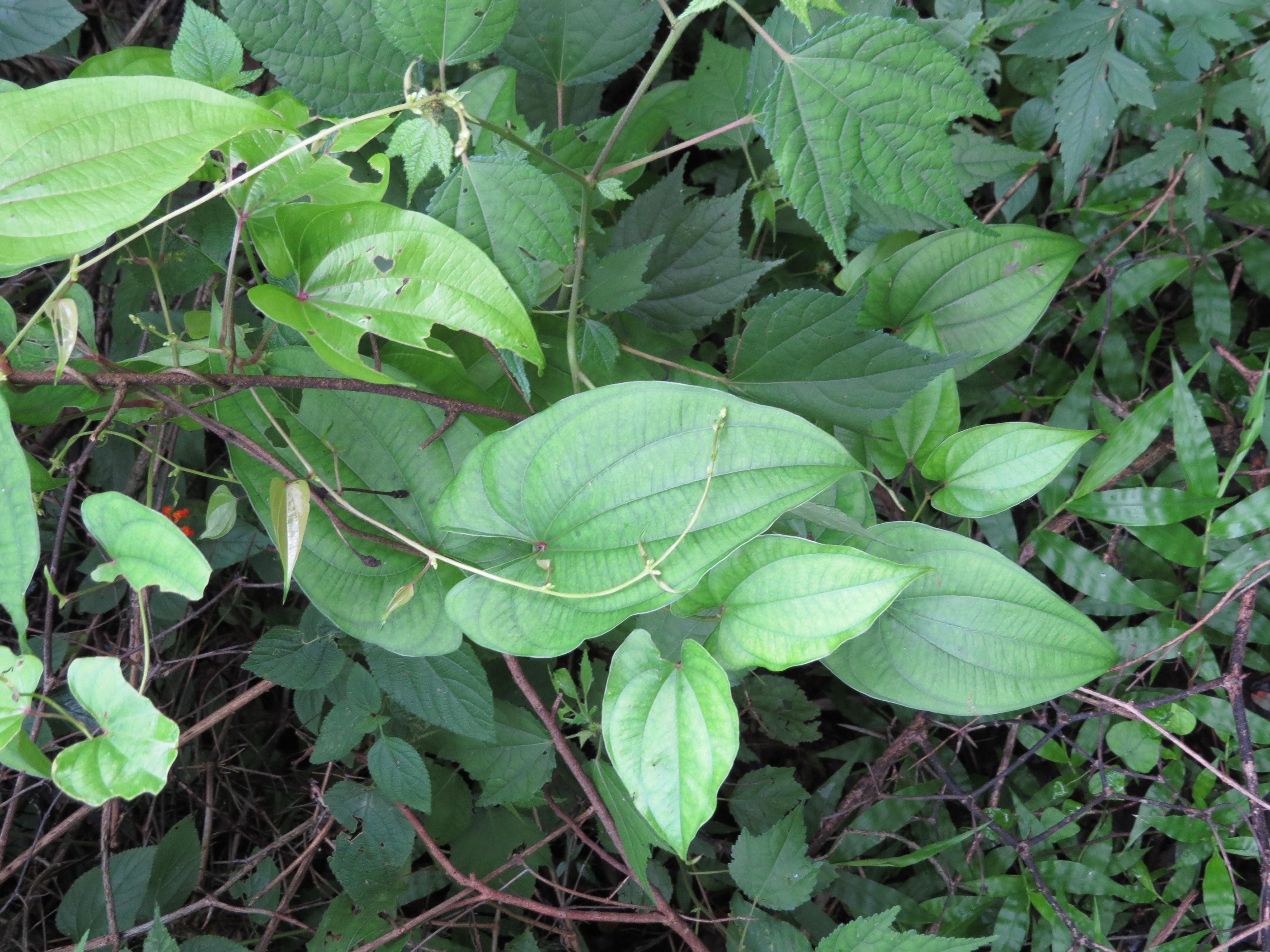|
Dioscorea hamiltonii Hook.f., Fl. Brit. India 6: 294 1892. (syn: Dioscorea persimilis Prain & Burkill; Dioscorea persimilis var. pubescens C.T.Ting & M.C.Chang; Dioscorea persimilis var. wukangensis Hand.-Mazz.; Dioscorea raishaensis Hayata);
.
Nepal to Taiwan and Pen. Thailand (as per WCSP);
.
Climber to at least 10 m. Tubers one per growing season, often with withering tuber of previous season, c. 0.4–1 by 7.5–12 cm, cylindric to clavate, vertically oriented, subtended by a woody crown. Indumentum sometimes present on young inflorescences, axes, stems and the veins of the leaf blade lower surface, hairs simple, 0.05–0.1 mm long. Stems 2–5 mm in diam., twining to the right, annual, unarmed, terete with shallow longitudinal ridges, usually drying a coppery colour in herbarium specimens. Leaves simple, opposite, sometimes subopposite or alternate toward base, blades narrowly to broadly ovate, in stem leaves always broadest above the point of petiole insertion, chartaceous to subcoriaceous, 7–9-veined, secondary venation prominent below, margins entire, base cordate, apex acuminate; petioles 2–8.5 cm long; cataphylls 2–2.5 by 2.5–3 mm, ovate to broadly ovate; bulbils and lateral nodal organs absent. Inflorescences pendent, axes copper-coloured like stem, tepals free, inserted on a discoid torus, fleshy in texture, with inner whorl tepals usually thicker than outer; male inflorescences spicate, simple or compound, compound inflorescences 1–2 per axil, simple/partial inflorescences 1–3(–4) per axil, peduncles 1.2–2.5 mm long, axes 0.8–2.7 cm long, flexuous; female inflorescences racemose, simple, 1–2 per axil. Male flowers with outer tepals 1.2–1.5 by 0.5–1 mm, ovate, inner tepals 1–1.2 by 0.7–0.9 mm, obovate, stamens 6. Female flowers on 1.1–2.5 mm long pedicels, and tepals 2.6–4.1 mm long (at least 2 times larger than males!). Capsules 19–25 by 38–43 mm. Seeds 6.5–7.5 by 7–7.5 mm, ovoid-lenticular, wings 19–21 by 17–19 mm, extending all around seed margin. Open areas in mixed deciduous forest with or without bamboo on limestone and other substrates; 400–1,250 m.
Thailand, Northern India (lectotype), southern China and Taiwan to southern Burma.
Tuber edible when boiled. According to Prain & Burkill (1936) it is among the most favoured edible yams in, for example, Vietnam and north-east India.
KHWS 14 : 8 posts by 6 authors. Attachments (4)
|Collection: Kalsubai-Harishchandragad wildlife sanctuary Habitat: Forest
Collection: March 2015 Tuber
Fresh plant September 2015
Collected By: Mahendra Khyade Dioscorea species but which one. how does one know. chemical analysis of the proteins/ or cho or what? or otherwise how? Dioscorea species in eFloraofindia (with details/ keys from published papers/ regional floras/ FRLHT/ FOI/ Biotik/ efloras/ books etc., where ever available on net) If stem twines to the right as it appears in your first pic, also opposite leaves in the same pic, it is probably D. alata L. I agree with … From external view i think this species is Dioscorea hamiltonii Perhaps yes, I do not know, please check-
and attached lit. from BP. Attachments (2)
Nepali name : बन तरुल Ban Tarul
. References: |
Dioscorea hamiltonii
Updated on December 24, 2024


